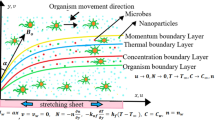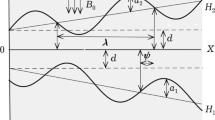Abstract
The dissolution rates for hydrocortisone alcohol and acetate were determined using a stationary disk/ rotating fluid system. The hydrocortisone was compressed in a tablet die, and the die placed in a vessel above a rotating magnetic bar. Dissolution rates were evaluated in aqueous media under conditions involving the following independent variables: solubility (C s), diffusion coefficient (D), viscosity (v), rotational speed (ω), and tablet radius (r). A design equation which relates dissolution rate (R) to these variables was formulated for the system R α C s D 2/3(v) −1/6(ω) 1/2( r)3/2 This design equation adequately represents the system, which is related to fluid mechanics and convective diffusion models. The fluid mechanics model assumes that the fluid ideally rotates as solid-body rotation and the momentum layer is initiated at the outside radius of the tablet die. The convective diffusion model is based on the formation of a diffusion layer at the outside radius of the dissolving surface and a predictable relationship between the momentum and the mass transport quantities of bulk viscosity and diffusion coefficient. This configuration, like the rotating disk in a stationary fluid, offers the attractive attribute of being useful to study drug release mechanisms for systems of pharmaceutical interest.
Similar content being viewed by others
REFERENCES
A. Dakkuri and A. C. Shah. Pharm. Technol. June:28–86 (1986).
A. C. Shah, C. B. Poet, and J. F. Ochs. J. Pharm. Sci. 62:671–677 (1973).
K. G. Nelson and A. C. Shah. J. Pharm. Sci. 64:610–614 (1975).
B. Vongvirat, S. Howard, J. Mauger, and L. Luzzi. Int. J. Pharm. 9:213–219 (1981).
H. Schlichting. Boundary Layer Theory, 6th ed., McGraw-Hill, New York, 1968.
J. H. Wood, J. E. Syarto, and H. Letterman. J. Pharm. Sci. 54:1068 (1965).
G. Milosovich. J. Pharm. Sci. 53:484–487 (1964).
K. A. Smith and C. K. Colton. AICHE 18(5):949–958 (1972).
K. A. Smith and C. K. Colton. AICHE 18(5):958–967 (1972).
T. von Karman. Z. Angew Math. Mech. 1:244–247 (1921).
W. G. Cochran. Proc. Cambr. Phil. Soc. 30:365–375 (1934).
V. Levich. Physicochemical Hydrodynamics, Prentice Hall, Englewood Cliffs, N.J., 1962.
M. H. Rogers and G. N. Lance. Q. J. Mech. Appl. Math. 17:319–330 (1964).
P. Kabasakalian, E. Britt, and Y. Yudis. J. Pharm. Sci. 55:642 (1966).
R. J. Braun and E. L. Parrot. J. Pharm. Sci. 61:592–597 (1972).
N. C. Fawcett and R. Caton. J. Anal. Chem. 48:600–604 (1979).
P. J. Stout, N. Khoury, J. Mauger, and S. Howard. J. Pharm. Sci. 75:65–67 (1986).
A. Paruta, B. Sciarrone, and N. Lordi. J. Pharm. Sci. 58:216–219 (1969).
K. G. Nelson and A. C. Shah. J. Pharm. Sci. 76:799–802 (1987).
Author information
Authors and Affiliations
Rights and permissions
About this article
Cite this article
Khoury, N., Mauger, J.W. & Howard, S. Dissolution Rate Studies from a Stationary Disk/Rotating Fluid System. Pharm Res 5, 495–500 (1988). https://doi.org/10.1023/A:1015965223891
Published:
Issue Date:
DOI: https://doi.org/10.1023/A:1015965223891




